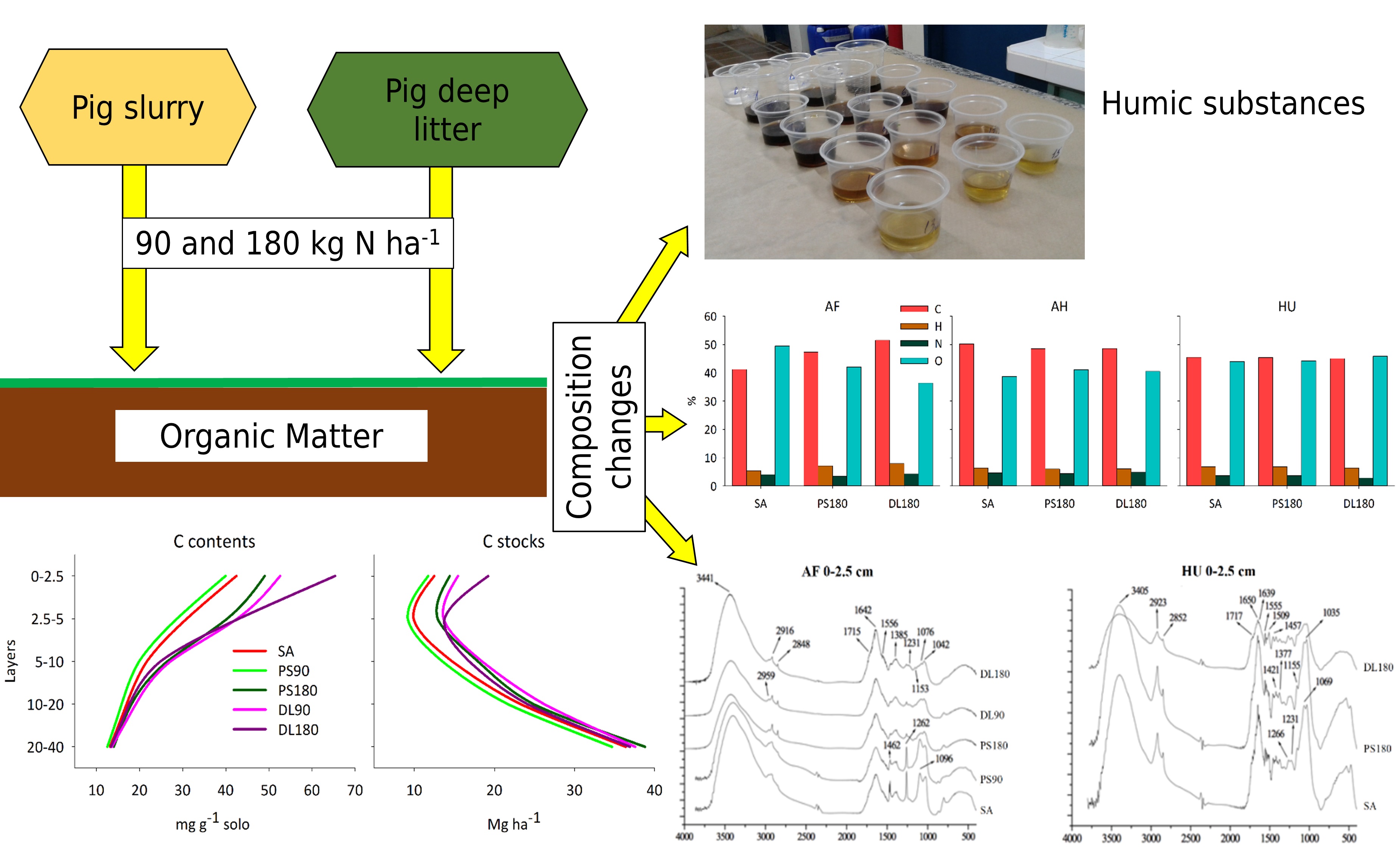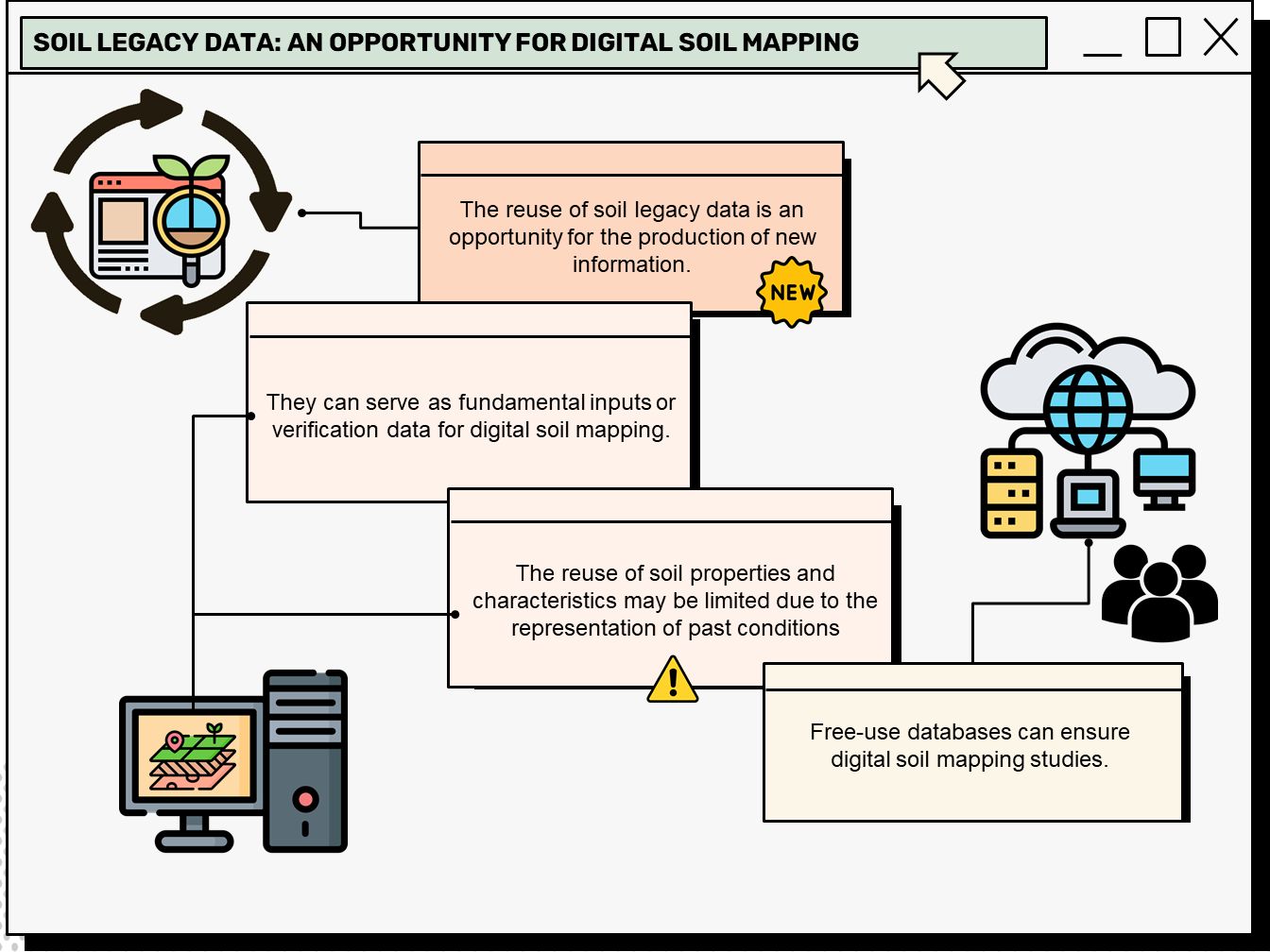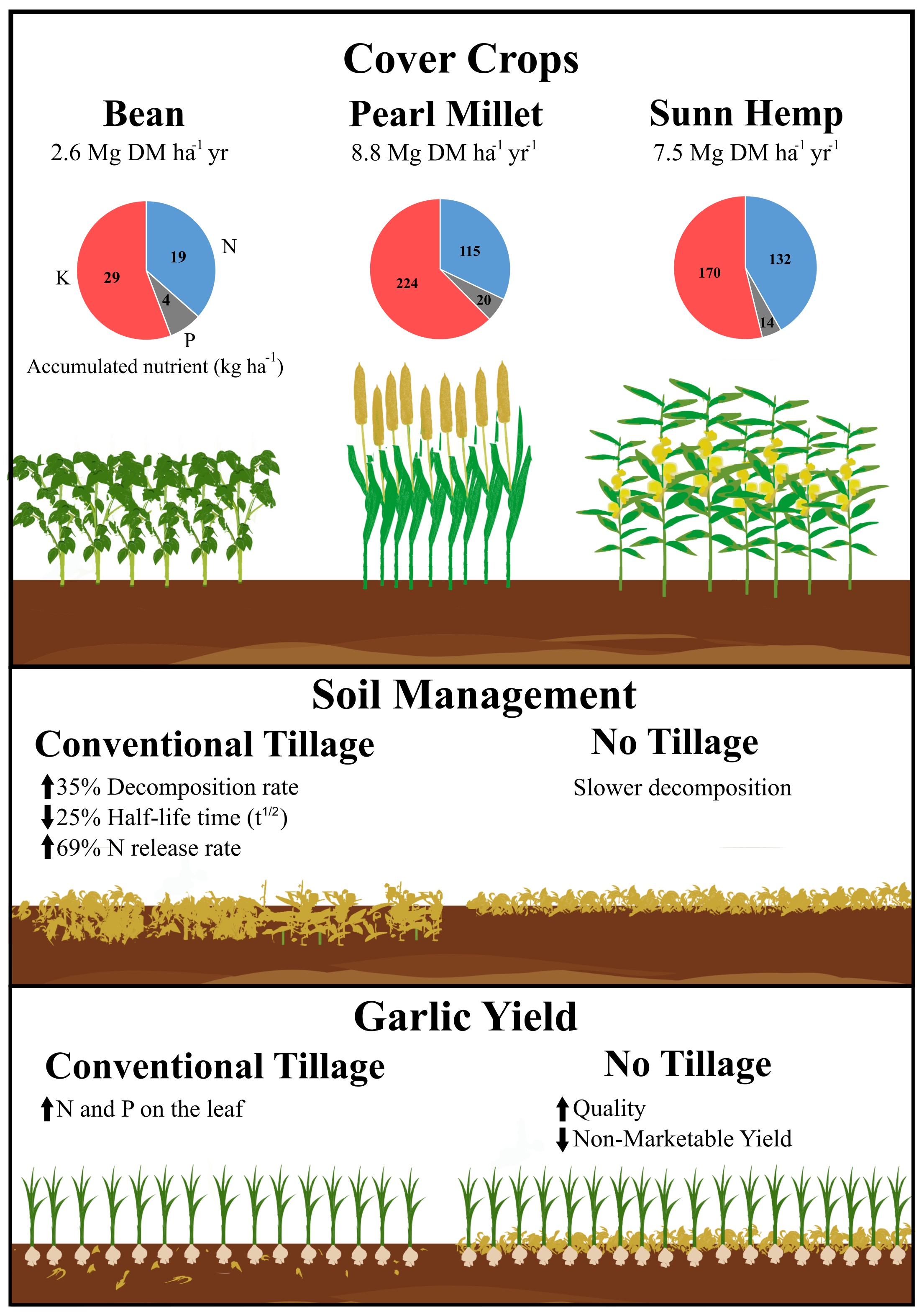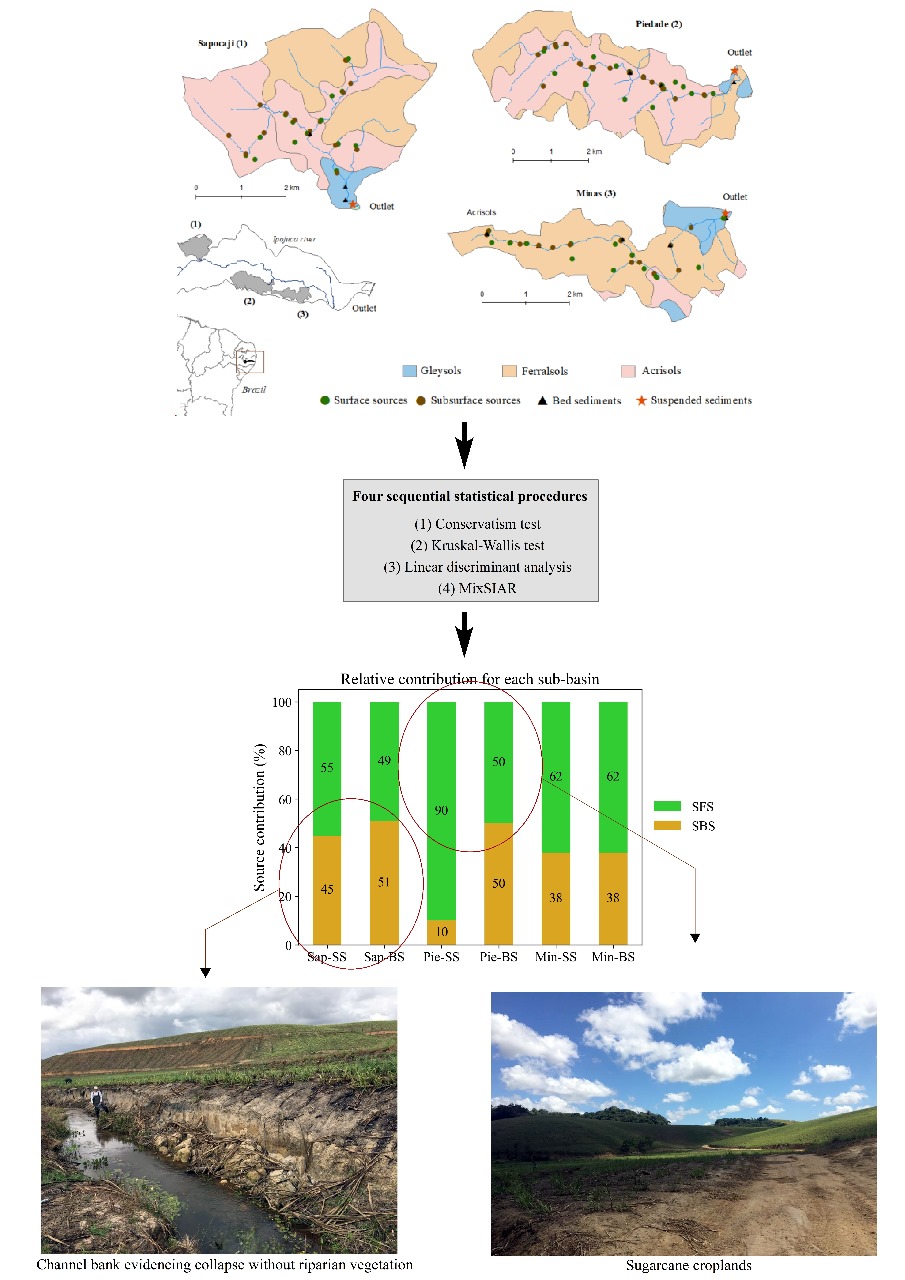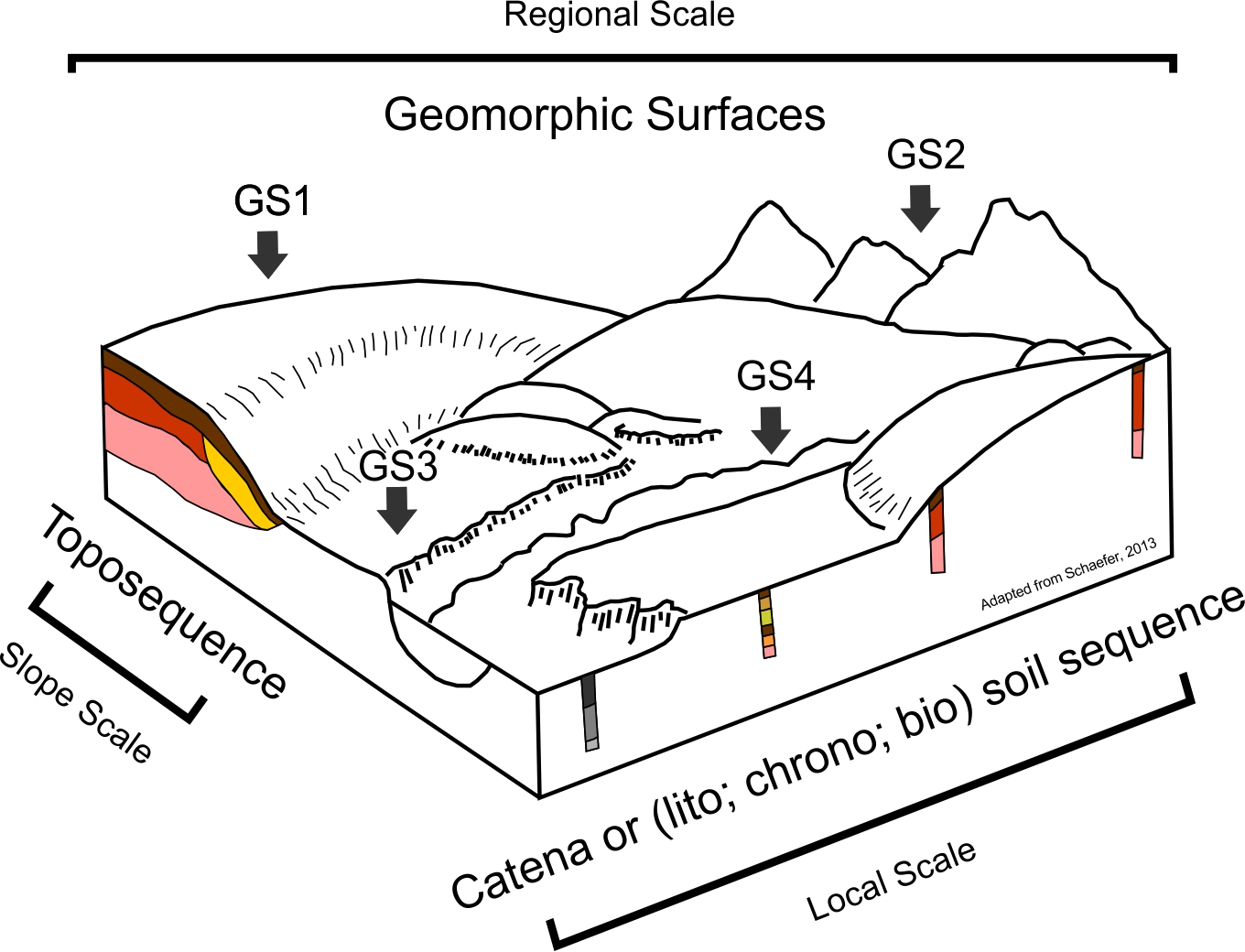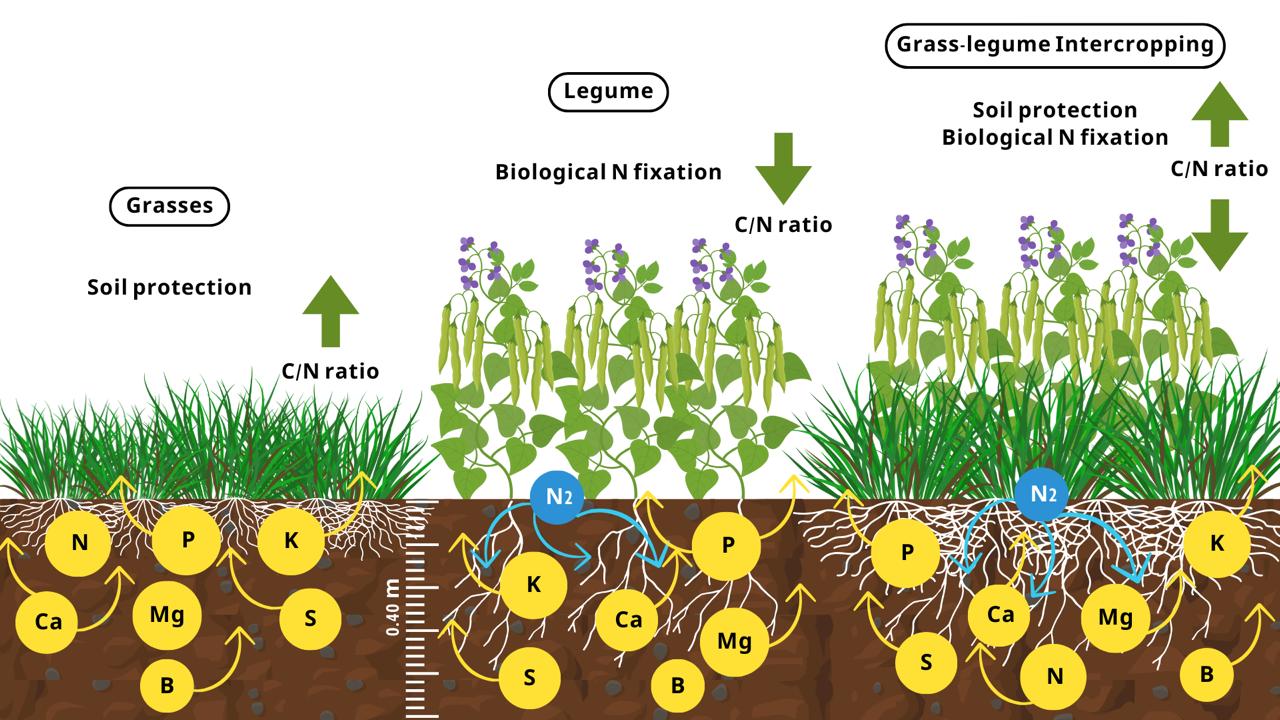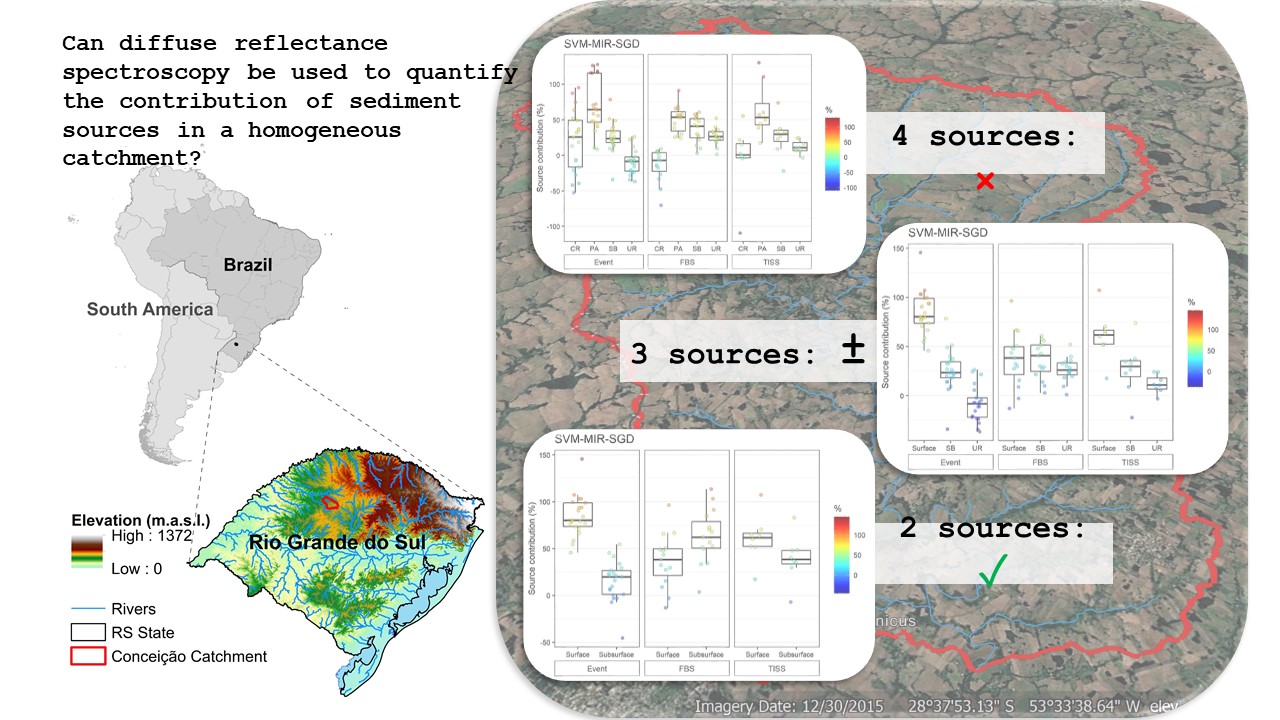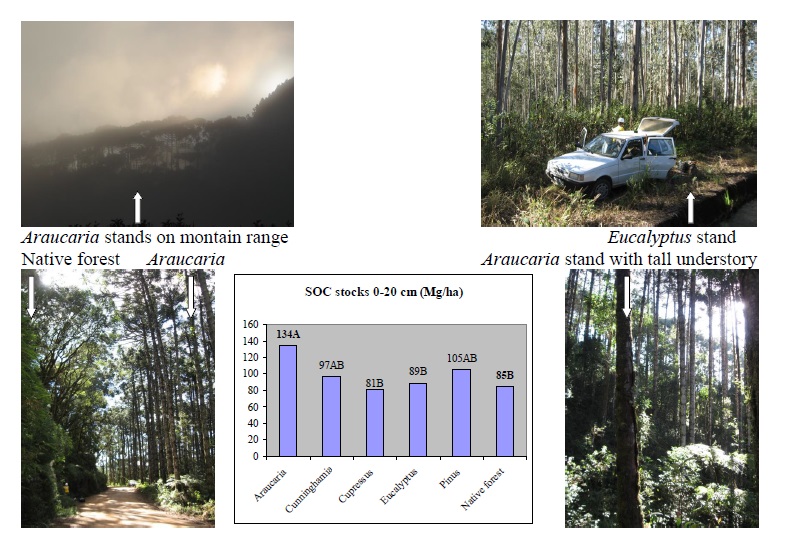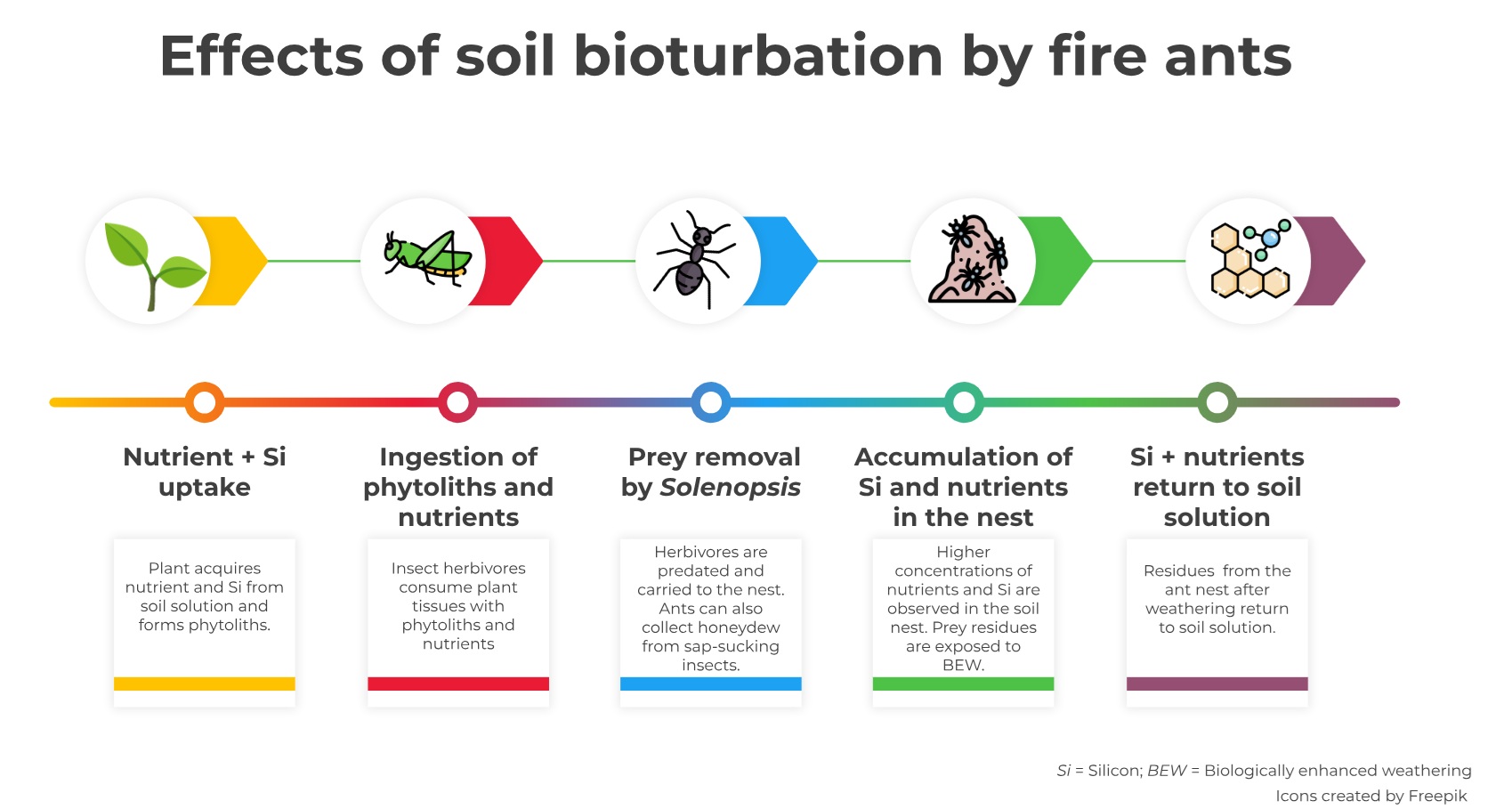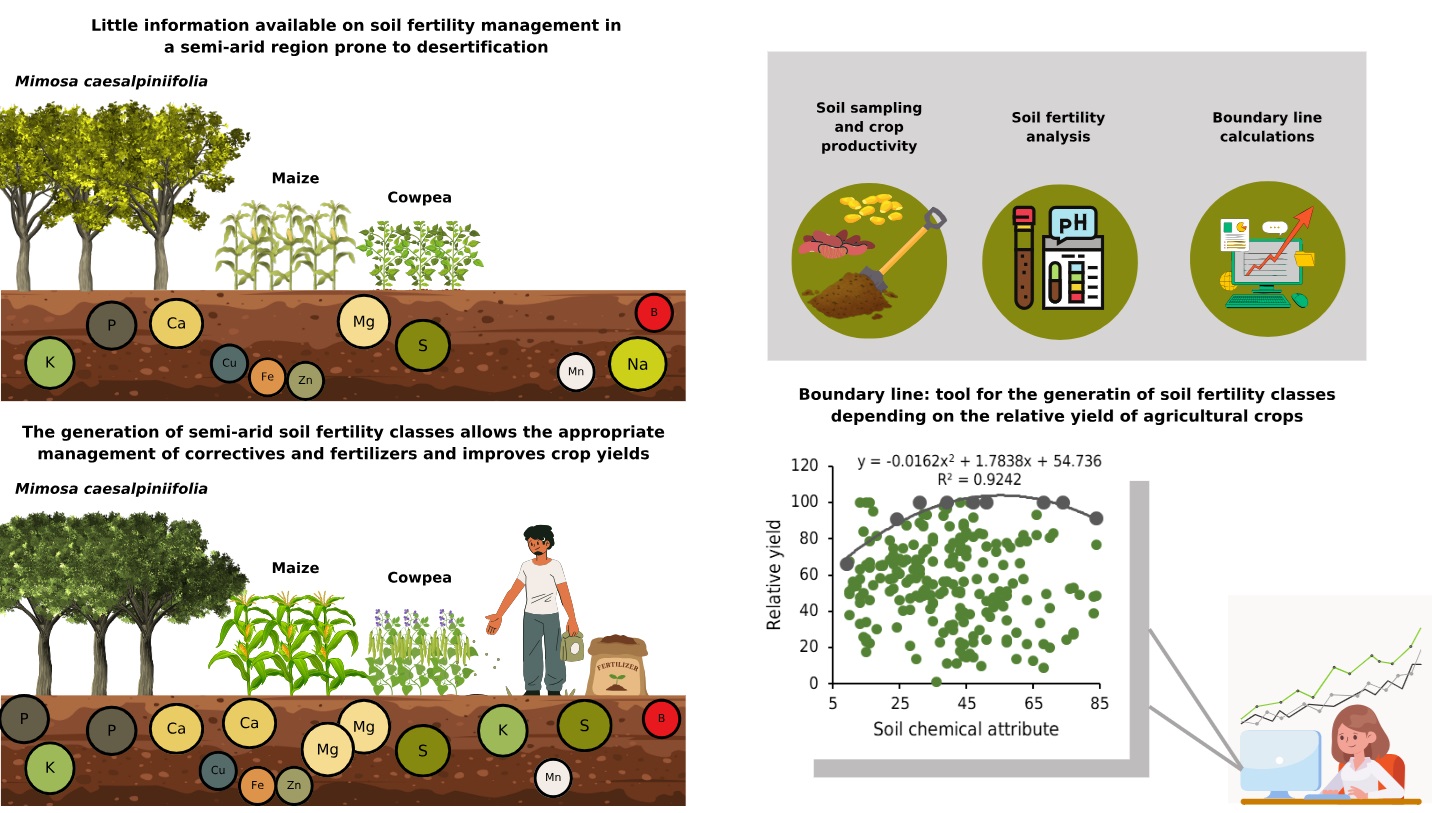Volume 48, 2024
Chemical and spectroscopic composition of humic substances in soil subjected to pig manure applications for ten years
27/Aug/2024
ABSTRACT Application of pig manure (PM) in agriculture can influence the amount and composition of soil organic matter (SOM). This study evaluated the changes in contents and stock of C in chemical fractions of SOM and the chemical and spectroscopic composition of humic substances (HS) in a Typic Hapludult (Argissolo Vermelho-Amarelo) after ten years of PM application. Experimental area received 90 and 180 kg ha-1 of N in the form of pig slurry (PS90 and PS180) and pig deep litter […]
Soil legacy data: An opportunity for digital soil mapping
23/Jul/2024
ABSTRACT Soil legacy data is past information on soils available from various sources (e.g. survey reports and maps). When compiled and organized, data obtained through historical retrieval can be used as basic input or validation data for digital soil mapping. A bibliometric analysis of this topic can reveal research patterns, evolution, and scientific contribution, thus mapping the science produced in a specific period and determining the trend in research topics based on search terms. This article presents the characterization of […]
Garlic yield after decomposition and nutrient release of cover crops under no-tillage and conventional tillage
31/May/2024
ABSTRACT Garlic (Allium sativum) is normally grown under conventional tillage (CT) with soil being excessively mixed by plowing and harrowing operations that degrade soil structure, increase production costs, and increase environmental contamination. Alternatively, cover crops can be grown and their residues placed on soil surface, enabling garlic to be grown under no-tillage (NT) system. However, for subtropical climate there is little information on the impacts of tillage systems and cover crop species, particularly of their decomposition process and nutrients release, […]
Sugarcane cultivation as a major surface source of sediment in catchments from a coastal zone of Pernambuco, Brazil
18/Jul/2024
ABSTRACT Identifying sediment sources is fundamental for protecting and improving soil and water quality. Conventional fingerprinting studies have often collected sediments at the overall watershed outlet only, resulting in an important spatial scale dependency. This study aimed to identify and to assess the delivery patterns of sediment sources within three priority sub-catchments (Sapocaji, Piedade and Minas) located in the downstream portion of the Ipojuca River watershed in Brazil. This research would build on understanding sediment sources in the studied watershed […]
Toposequence: What are we talking about?
10/Jun/2024
ABSTRACT The term toposequence, proposed to designate a lateral succession of soils on a slope due to the influence of topography, began to be used differently over time, distancing itself from its original concept. Here, we discuss how this concept has been used since its inception. We carried out bibliometric analyses of publications in the database available on the Web of Science since 1900. Three main approaches and related concepts, explicit or not, one at a regional scale and two […]
Forage and macronutrient accumulation in grass-legume intercropping in a warm climate
26/Jul/2024
ABSTRACT Diversifying pastures with forage legumes may reduce nitrogen fertilization due to biological N fixation. This study aimed to quantify forage accumulation rate and macronutrients extraction and to identify the best intercropping combination between butterfly pea (Clitoria ternatea) – a legume, and three warm-season forage grasses of different growth habits (signalgrass – Urochloa decumbunes, Guinea grass – Mega thyrsus maximus, and bermudagrass Cynodon dactylon). Treatments consisted of mixes of perennial herbaceous legume, butterfly pea (twining stem), with grasses, signalgrass (decumbent […]
Sediment source tracing in a Brazilian subtropical catchment using diffuse reflectance: Effect of spectral ranges, pre-processing techniques, and multivariate model
11/Oct/2024
ABSTRACT Agriculture intensification in Southern Brazil’s subtropical regions combined with the frequent occurrence of erosive rainfall has rendered the area a global water erosion hotspot. In this scenario, understanding and regulating erosion processes at the river catchment scale is critical for mitigating soil and water resource degradation. Traditional methods for tracing sediment sources are expensive and time-consuming and justify the development of alternative approaches. Therefore, in this study, we employed diffuse reflectance spectroscopy analyses in the ultraviolet-visible (UV-VIS), near-infrared (NIR), […]
Soil organic carbon sequestration under Araucaria angustifolia plantations but not under exotic tree species on a mountain range
19/Jun/2024
ABSTRACT Plantation forests can be efficient C sinks in biomass and soil organic carbon (SOC), but the latter depends on many factors, including climate. Tropical humid, mountain areas have cooler temperatures, slowing microbial decomposition, and thus can store considerable SOC. However, the effects of forest plantations on SOC of these montane areas are still poorly studied. Here, we aimed to assess changes in SOC, and related soil properties, after conversion of native rainforest to plantations of five tree species, with […]
Influence of Solenopsis invicta Buren on soil chemical properties, silicon pools, and phytolith assemblages in organic agricultural soils
25/Nov/2024
ABSTRACT Ants mediate ecosystem services that can modulate crop performance and overall agroecosystem functioning. Our study investigated how the activity of Solenopsis invicta Buren (Hymenoptera: Formicidae) influences soil chemical properties, soil silicon pools, and soil phytoliths. We hypothesized Solenopsis invicta Buren activity would increase the macronutrient content, available silicon for plants (PASi), and amorphous silicon (ASi) in nest soils, which is related to changes in the phytolith assemblage. This study was conducted on agricultural soil under organic management, covering an […]
Critical levels and fertility classes of soils with high-activity clay in the Brazilian semi-arid region
04/Nov/2024
ABSTRACT Soil fertility evaluation is important for adopting conservation management and adequate nutrient supply. The objective of this study was to identify critical levels and soil fertility classes using the boundary line method for rainfed crops (corn, cowpea and sabiá [Mimosa caesalpiniifolia]) in the Brazilian semi-arid region. A database of 226 soil fertility analyses of samples from the 0.00-0.20 m soil layer, and corn, cowpea and sabiá yields from Ceará State was used to generate interpretation classes (at 80 and […]

